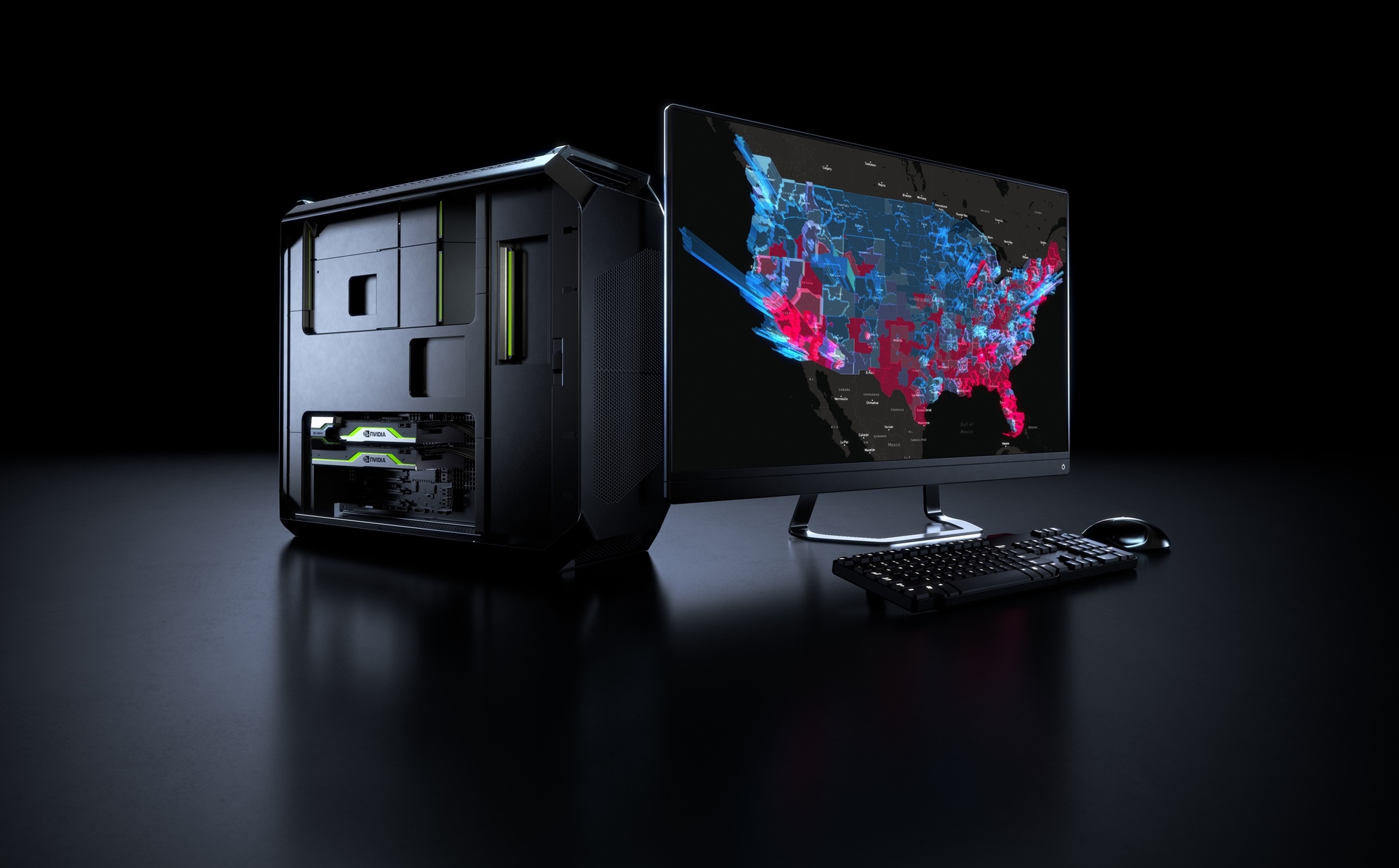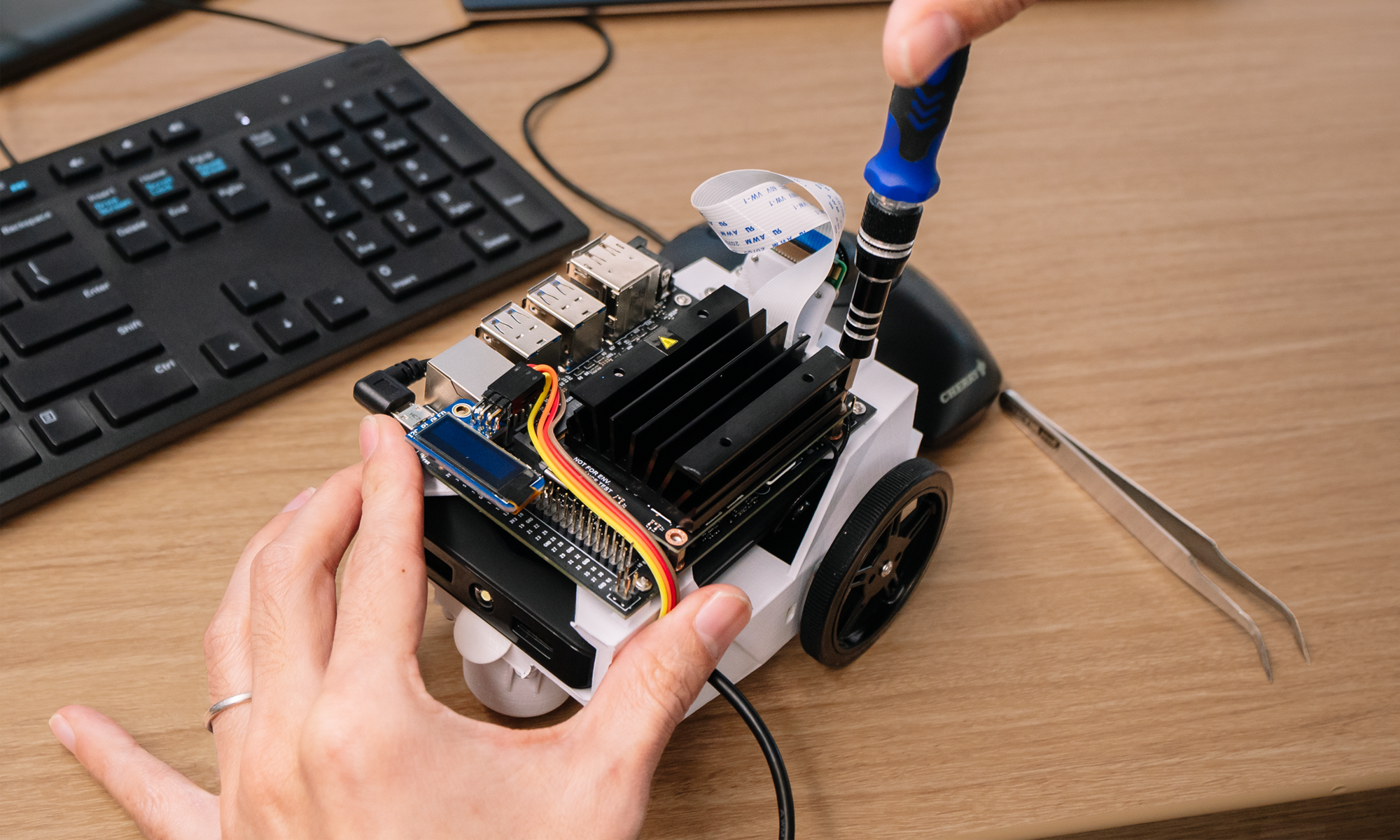 INFRA
INFRA
 INFRA
INFRA
 INFRA
INFRA
With its next marquee graphics processing unit chip not due to debut until next year, Nvidia Corp. today opened its GPU Technology Conference instead with a raft of new machines and services intended to cement the leading position of its existing chips in computer graphics, data science and artificial intelligence.
Among the introductions headlining the Santa Clara, California-based company’s annual conference in San Jose this week were new workstations (below) intended to speed up data science work, plus servers based on its RTX real-time ray tracing technology introduced last year that provide cinematic-quality graphics for creating videogames, virtual reality and augmented reality.
The new family of data science workstations will be available from Nvidia’s major computer partners, such as Dell Technologies Inc. and Lenovo Group Ltd. Essentially, Nvidia co-founder and Chief Executive Jensen Huang (pictured) boasted during his Monday afternoon keynote at GTC, “we’re taking an entire enterprise data science team and shrinking it into a box,”

Nvidia also said its top AI-oriented data center server chip will soon become available not just via Nvidia’s cloud but also on Amazon Web Services Inc.’s cloud via a new G4 compute instance. In addition, the T4 will be available on servers for use on-premises from Cisco Systems Inc., Dell EMC, Fujitsu Ltd., Hewlett Packard Enterprise Co., Inspur, Lenovo and Sugon. The chip is customized for doing machine learning and deep learning, the branches of AI that have led to big advances in speech and image recognition and self-driving cars in recent years.
In particular, the T4 is aimed at AI inference, which is the compute-intensive process of running neural network models that have been trained with reams of data. Ian Buck, vice president and general manager of Nvidia’s Accelerated Computing unit, said use of the T4 in the cloud has helped PayPal Inc. process payments in real time while reducing fraud by 10 percent, and also helped Snap Inc. do real-time processing of photo snaps and boost ad efficiency.
Bill Dally, chief scientist and head of research at Nvidia, claimed in an interview with SiliconANGLE that the T4 remains far ahead of rivals in AI inference, even specialized AI chips made by dozens of different chipmakers. “A lot of those startups are going to disappoint their venture capitalists,” he said.
In any case, AI inference looks to grow faster than AI training in coming years as all those AI models find their way into myriad services.
“Inference acceleration is still a small market, but will grow dramatically, exceeding the training market over the next five years,” Karl Freund of Moor Insights & Strategy, told SiliconANGLE. “Nvidia never had a chip before T4 that was designed for inference, so these points are significant first steps in adoption, on-premises and in the cloud.”
Nvidia also introduced a unified library of accelerated computing services dubbed CUDA-X. AWS is using CUDA-X in its SageMaker machine learning cloud service, and it’s used by Microsoft Corp., Databricks Inc. and others. Free to use, it’s also available in software containers, which allows them to be used on multiple computing hardware and platforms.
“Accelerated computing is not just about the chips, said Huang. “A computer is only successful because of the ecosystem around it.”
Nvidia is offering some of its own specialized toolkits for AI as well. Today, for instance, it unveiled Clara AI, built to do better radiology.
Nvidia also weighed in with new products and services for devices out in the world, from self-driving cars to robots and other devices at the edges of networks.
On the autonomous-car front, Nvidia announced a cloud-based autonomous-vehicle simulation platform called DRIVE Constellation. The company said it allows millions of miles to be driven in virtual worlds in scenarios ranging from routine driving to quite rare and dangerous situations more efficiently than it can be done in the real world. Introduced at last year’s GTC, it uses two servers, one a simulator and the other containing a Nvidia’s DRIVE AGX Pegasus AI-driven car computer that processes the simulated sensor data.
In addition, Nvidia announced a Safety Force Field driving policy to its DRIVE AV autonomous-vehicle software suite that predicts the changing situation in the driving environment and determines the best set of actions to protect the car and people on the road. It’s intended to make sure that the actions won’t create an unsafe situation.
David Nister, vice president of Autonomous Driving Software at Nvidia, said the Safety Force Field is “mathematically designed such that autonomous vehicles equipped with SFF will, like magnets that repel each other, keep themselves out of harm’s way and not contribute to unsafe situations.” It can be combined with any driving software, Nvidia said.
Not least, Nvidia said it has signed a deal with Toyota Research Institute-Advanced Development to develop, train and validate self-driving vehicles. It will be the first to use Constellation as well.
Nvidia boosted its services for edge devices as well with the announcement of the Jetson Nano (below), a small computer that runs AI workloads using as little as five watts.

Photo: Nvidia
Coming in two versions, a $99 model for developers and a production-ready $129 model for companies, it’s aimed at making it far easier for mere mortals to create AI projects such as robots, digital assistants and automated appliances. Essentially, said Dally, it’s intended to be the Raspberry Pi for AI.
Nvidia has struggled a bit in recent quarters as demand for its chips used in cryptocurrency mining has fallen along with the prices of bitcoin and other alternative currencies. Although most analysts view that problem as temporary, the company can use growth not only in its core gaming business but in faster-growing new markets for data science and AI — thus the big focus on the latter at this year’s conference.
Support our mission to keep content open and free by engaging with theCUBE community. Join theCUBE’s Alumni Trust Network, where technology leaders connect, share intelligence and create opportunities.
Founded by tech visionaries John Furrier and Dave Vellante, SiliconANGLE Media has built a dynamic ecosystem of industry-leading digital media brands that reach 15+ million elite tech professionals. Our new proprietary theCUBE AI Video Cloud is breaking ground in audience interaction, leveraging theCUBEai.com neural network to help technology companies make data-driven decisions and stay at the forefront of industry conversations.